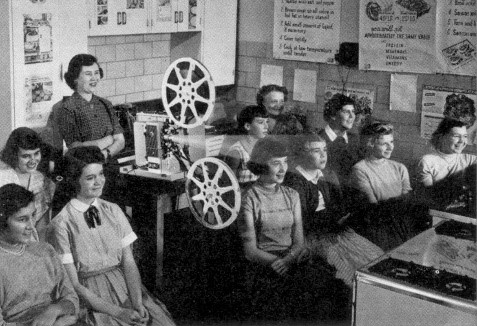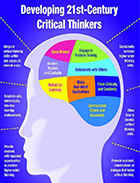Films in classrooms
Films in classrooms
 Films and documentaries are said to bring the world to its viewers. However, they cannot be merely dismissed as a source of entertainment or pass time activity at homes. Films have gone on to educate students in an interesting manner, engaging them with visuals and improving their imaginative skills to such an extent, that schools cannot simply do without them. The use of films also holds a very important place as alternative teaching tools that may help trigger the interest of its students to achieve positive learning.
Films and documentaries are said to bring the world to its viewers. However, they cannot be merely dismissed as a source of entertainment or pass time activity at homes. Films have gone on to educate students in an interesting manner, engaging them with visuals and improving their imaginative skills to such an extent, that schools cannot simply do without them. The use of films also holds a very important place as alternative teaching tools that may help trigger the interest of its students to achieve positive learning.Screening films in classrooms maybe an engaging activity for students. However, teachers must understand the importance of viewing a film, in order to make it an effective experience.
For different grades, films can be selected based on their ratings-
-
G-rated films- are those films that do not require any signed permission or forms from parents or the student’s guardians.
-
PG rated films- A signed parental permission form is required for students under the age of 13. At an elementary school level, the principal needs to ask a granting committee to review the film before screening it.
-
PG 13 rated films- A signed permission is required from parents of children under the age of 14. Here, the principal needs to ask a granting committee to review the film before screening the film.
-
R rated films- A signed parental permission form is required for all students. The principal will ask a committee to review the film before screening.
 The advantages of films are as follows-
The advantages of films are as follows--
Films are said to be a rich source of language learning. They are highly motivating and can be used as a successful second language acquisition tool.
-
Films mirror reality which help students understand how real-life situations are in other countries. For those students who aspire to move out and study, films help them understand the language and culture of different countries, thus preparing them for the future.
-
Films help them to visually understand language exchanges, emotions and gestures. They also help in understanding verbal cues and increases the focus of attention among students.
-
Films extend teaching techniques and resources and also acts like a catalyst which helps in the development of the four communication skills of a student. It can be used as a model to increase the reading and writing activities in a classroom while bringing up discussions and debates that reconstructing and summarising the topic or lesson.
-
Films are not restricted to the topics taught in school and extends beyond that.
However, it is also very important to choose and show the right films in class, as showing films that are not suitable for the age group may cause problems later. For this, parents and teachers should sit together and come up with a list of films that needed to be shown to enhance the learning experience of the child.





















